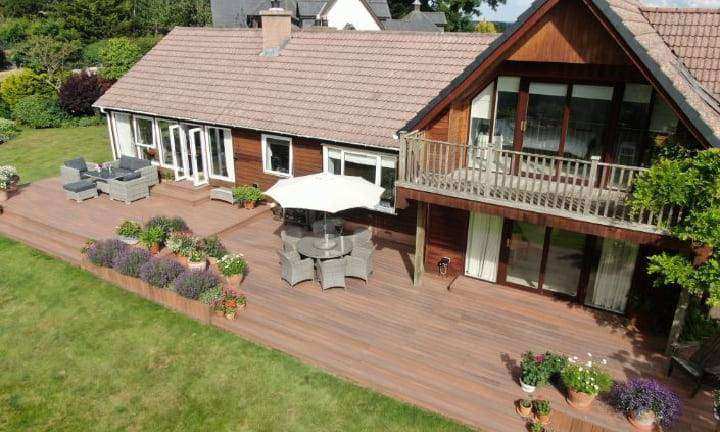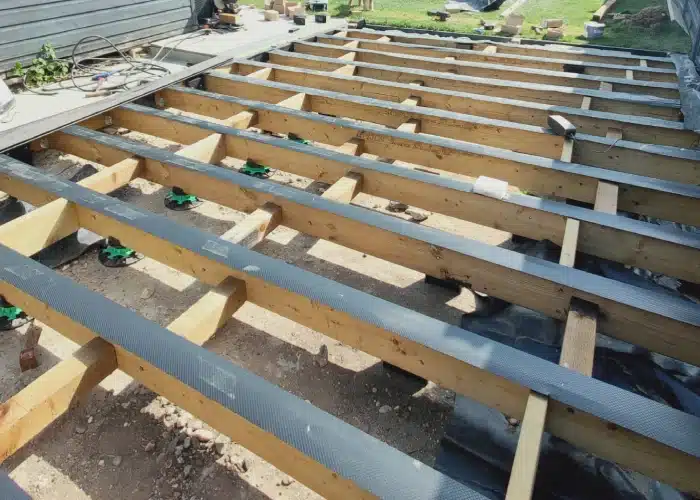Does composite decking expand?
Can I Stain My Composite Deck
Given its environmentally friendly credentials, Composite decking has become an extremely popular alternative to timber over recent years. It comes in many different wood grain patterns and rich colours.
Composite boasts many benefits including enhanced durability and improved moisture absorption meaning there is no specific requirement for staining in contrast with timber decking, but can you stain composite decking?
In essence, the answer is yes – if you have a first-generation decking board and the answer is no if you have a second-generation decking board.
There are some cases where you may want to consider staining your composite decking to increase the life span and aesthetic appeal of the decking. This tends to be customers that have purchased first generation decking and have had their composite deck down for a number of years, we will take a look in more depth below but first, what is staining?
What Is Staining?
Staining composite material involves applying a varnish like product that coats the surface and seals the decking boards from moisture and in most cases UV rays. Whilst composite decking is known for its durability and resistance to weathering effects, staining is still done in some cases. Why would you stain composite decking?

Why Would You Stain Composite Decking?
- UV Protection: Composite decking is available in a huge variety of colours however over time, exposure to the sun will cause the original colour to fade. For example, first generation boards (uncapped decking boards with a wood-fibre surface layer) will lose up to 30% of their original colour over their lifespan. Staining months or years after installation can help maintain or increase the vibrancy of the decks colour over an extended period.
- Moisture Absorption: Staining can offer an additional layer of protection against weathering effects such as rain and snow. First generation boards will absorb moisture causing the boards to swell during wet seasons. Therefore, by staining your decking you will decrease the amount of swelling that takes place throughout the board’s lifespan.
- Mould & Mildew: As mentioned above first generation boards will absorb moisture and water, if your deck is left uncleaned, this become breeding growth for mould and mildew, staining or sealing your deck with reduce this occurring, providing a longer life and better looking deck.
- Vibrancy: Decking stains are typically varnish like products that act as protective membrane surrounding the decking. They are often available in a wide range of attractive shades. These shades can add additional colour and vibrancy to your decking giving it more aesthetic value.
Why Wouldn’t You Stain a Second-Generation Composite Deck?
Second generation composite decking is manufactured with a protective PE membrane often referred to as a “capped layer”. Due to this additional protection, the decking boards will only lose up to 10% of their original colour. In additional the amount of moisture absorption is significantly less compared to uncapped first generation boards.
Therefore, the process of staining becomes pointless when using second generation decking boards as the design already boasts these benefits of being UV resistant and moisture resistant.
Capped composite boards due to there surface PE layer wont absorb any stains or sealant, they absorb extremely minimal amounts of water and moisture, enabling them to almost repel liquids, which is great for grease, food and drink stains resistance.
Choosing Your Deck Stain
Choose a deck stain with a mildew-resistant coating (i.e. mildewcides or mould inhibitors) to protect your composite decking. Likewise, deck stains with zinc particles will help fight against mildew and add improved protect against UV rays too. Avoid film-forming or solid deck stains because these begin to chip and peel away after a few months. Film-forming stains are also prone to mildew because they create a film over the surface that can trap moisture.
How To Stain Your Composite Deck?
Tools required:
- Safety Glasses
- Respirator Mask (only if using a spray application)
- Soft Bristle Brush
- Composite Deck Cleaner
- Hose or Pressure Washer
- Bucket
Tools required:
- Paint Roller
- Paintbrush For Corners and edges
- Paint Tray
- Painters Tape (used for masking areas you do not want to stain)
- Plastic Sheeting (to protect surrounding areas)
- Stir Stick (used for mixing your chosen stain thoroughly before application)
Step 1
Clean the deck
· Sweep away any dirt or debris such as sticks or leaves from the surface.
· Use a composite deck cleaner (following the manufactures guidelines and instructions)
· Rinse the deck thoroughly with either a hose or pressure washer (please note on a low setting and not too close)
Step 2
Allow the deck to dry
· Make sure the deck is completely dry before starting the staining process. This could potentially take a day or two dependant on the season and how wet your conditions are.
Step 3
Mask off areas
· Using your painters tape you can mask off areas you do not want to stain such as plants.
Step 4
Mix the stain
· If the stain requires mixing, use your stirring stick to ensure it is blended.
Step 5
Apply the stain
· Use a paint roller, staining pad or brush to apply the stain evenly.
· We advise to work in small sections, applying the stain along the length of the composite boards
· Ensure you do not leave any drips or excess stain
Step 6
Brush edges / corners
· Using your paint brush, carefully apply your stain to edges, corners and any areas your roller/brush could not reach.
Step 7
Allow to dry
· On average, composite deck stains can take a few hours to dry
Step 8
Apply a second coat (if required)
· Some stains need a second coat dependant on the instructions provided by the manufacturer.
Step 9
Remove masking tape
· Once your stain has dried, carefully remove any painters tape that you applied previously.
Clean Up
Properly seal and dispose of containers as well as used water, brushes and roller covers. Allow sufficient drying time before subjecting the surface to foot traffic and placement of furniture and potted plants.
Staining or sealing your composite decking can bring the colour and appearance back to life and look almost brand new again, you will have to stain again in a few years, as once the process has started it must be maintained onwards.
Conclusion
Staining your composite decking is not required throughout your decking’s life span however if you have purchased first generation decking boards you can apply a staining product if you would like to increase your decks aesthetic value and longevity.
Replacing a Wooden Deck with Composite Decking




